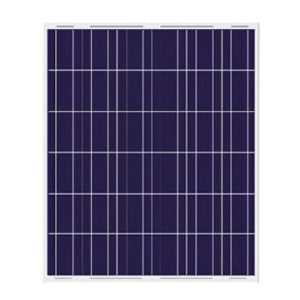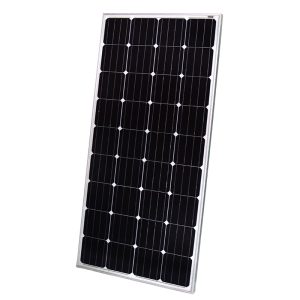As the world shifts towards sustainable energy solutions, solar power has emerged as a game-changer in Pakistan. With abundant sunshine and a growing demand for electricity, installing a 10 kW solar system can be a wise investment for residential and small commercial applications. In this article, we’ll delve into the intricacies of 10 kW solar systems, their components, costs, and the potential savings they offer.
Overview
A 10 kW solar system is a popular choice for households and small businesses in Pakistan, capable of generating enough electricity to meet their energy needs. The average price for a 10 kW on-grid solar system in Pakistan ranges from PKR 1,450,000 to PKR 2,200,000, depending on the quality of components, installation requirements, and the solar company.
System Components
A typical 10 kW solar system comprises the following key components:
Solar Panels: Tier 1 monocrystalline PERC solar panels from reputable brands like Canadian Solar, Jinko Solar, LONGi Solar, and JA Solar are commonly used. These high-efficiency panels ensure optimal energy generation and long-term performance.
Solar Inverters: High-quality inverters from brands such as GoodWe, Sungrow, Huawei, Infini, ABB, and SMA are essential for converting the direct current (DC) generated by the solar panels into alternating current (AC) for household use.
Mounting Structure: A standard ground-mounted or customized raised PV structure is used to securely install the solar panels, ensuring optimal orientation towards the sun.
Electrical Components: AC/DC breakers, surge protection devices, cables, disconnect switches, earthing, and lightning arrestors are necessary for safe and efficient system operation.
System Types
When it comes to 10 kW solar systems in Pakistan, there are three main types to choose from:
On-Grid Solar System: Connected to the utility grid, this system allows for net metering and selling excess electricity back to the grid, offsetting your electricity bills.
Off-Grid Solar System: A battery-based system designed for backup power during outages, but without the ability to sell excess electricity to the grid.
Hybrid Solar System: Combining the features of on-grid and off-grid systems, this option includes battery backup and net metering capabilities, providing the best of both worlds.
Net Metering
Net metering is a crucial aspect of on-grid solar systems, as it allows customers to sell excess electricity to the grid and offset their utility bills. The solar company typically handles the documentation, processing, and dealings with the local distribution company (DISCO) for net metering setup.
Energy Production and Savings
A well-designed 10 kW solar system can produce an average of 14,600 kWh of electricity annually in Pakistan. With net metering, this system can potentially save PKR 292,000 per year on electricity bills, assuming a per-unit charge of PKR 20. The payback period for a 10 kW solar system in Pakistan is typically 4-5 years, making it a financially attractive investment.
Appliances Supported
A 10 kW solar system can support a load of approximately 1,100 – 1,200 units per month, which is sufficient for running multiple air conditioners, refrigerators, fans, lights, TVs, washing machines, and other household appliances.
Installation and Warranty
Most reputable solar companies in Pakistan offer complete installation services, including site surveys, system design, and after-sales support. Typical warranties include 25 years for solar panels, 5 years for inverters and mounting structures, and 2 years for operation and maintenance.
Reputable Solar Companies
Premier Energy, Premium Solar, Sympl Energy, Pakistan Solar Traders, Alpha Solar, and Home Services Lahore are among the well-known solar companies in Pakistan offering 10 kW solar system packages.
Additional Topics
150 kW Solar System Cost Breakdown in India
While the focus of this article is on 10 kW solar systems in Pakistan, it’s worth exploring the cost breakdown of a larger 150 kW system in neighboring India for comparison purposes.
According to Solar Exporters, a 150 kW on-grid solar system in India can cost around INR 5,700,000 (approximately PKR 12,750,000). This includes the cost of solar panels (typically 450 panels of 335W each), inverters (2 x 50kW), mounting structures, cables, distribution boxes, lightning arrestors, and installation charges.
The breakdown of costs for a 150 kW system in India is as follows:
- Solar Panels: INR 5,000,000 (PKR 11,160,000)
- Inverters: INR 440,000 (PKR 982,000)
- Mounting Structure: INR 400,000 (PKR 892,000)
- Cables and Electrical Components: INR 140,000 (PKR 312,000)
- Installation and Other Costs: INR 720,000 (PKR 1,606,000)
It’s important to note that these costs can vary based on the specific components, location, and installation requirements.
Solar Exporters Company Overview
Solar Exporters is a professional solar module manufacturer with over 12 years of experience in production and quality control since 2010. Based in China, the company specializes in producing high-quality solar panels, foldable solar panels, and other solar components for residential, commercial, and industrial applications.
With a strong focus on innovation and sustainability, Solar Exporters aims to provide cost-effective and reliable solar solutions to customers worldwide. The company’s products are designed to meet the highest industry standards, ensuring optimal performance and durability.
Solar Energy Basics and Applications
Solar energy is a renewable and sustainable source of energy that harnesses the power of the sun’s radiation. It is a clean and environmentally friendly alternative to fossil fuels, with numerous applications across various sectors.
Photovoltaic (PV) Technology: PV technology converts sunlight directly into electricity through the use of solar cells made of semiconductor materials like silicon. These solar cells are assembled into solar panels, which can be installed on rooftops, ground-mounted systems, or integrated into building designs.
Solar Thermal Technology: Solar thermal technology utilizes the sun’s heat to generate thermal energy for various applications, such as water heating, space heating, and industrial processes. This technology relies on solar collectors that absorb and concentrate the sun’s rays to heat a fluid, which can then be used for heating or electricity generation.
Solar Energy Applications:
- Residential and Commercial Buildings: Solar PV systems and solar water heaters are widely used in residential and commercial buildings to generate electricity and hot water, reducing energy costs and carbon footprints.
- Utility-Scale Power Generation: Large-scale solar power plants, both PV and concentrated solar power (CSP), are being developed to generate electricity for the grid, contributing to the transition towards renewable energy sources.
- Solar Heating and Cooling: Solar energy can be used for space heating and cooling in buildings through passive solar design techniques and active solar heating and cooling systems.
- Solar Desalination: Solar energy can be utilized in desalination processes to produce freshwater from saline or brackish water sources.
- Solar Industrial Processes: Solar thermal technologies can provide heat for various industrial processes, such as food processing, textile manufacturing, and chemical production.
- Solar Transportation: Solar energy can be used to power electric vehicles and charge their batteries, contributing to sustainable transportation solutions.
As the world continues to embrace renewable energy sources, solar energy is poised to play a pivotal role in meeting our energy needs while reducing our environmental impact.
In conclusion, investing in a 10 kW solar system in Pakistan can be a wise decision, offering significant long-term savings, energy independence, and a reduced carbon footprint. With the right system components, installation, and maintenance, homeowners and small businesses can harness the power of the sun and contribute to a more sustainable future.



